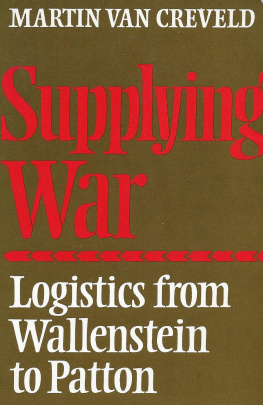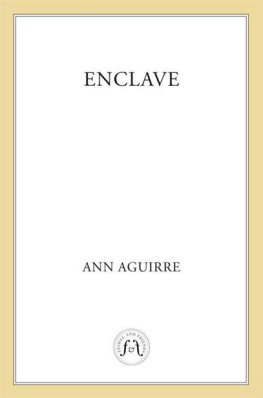
This edition is published by PICKLE PARTNERS PUBLISHINGwww.picklepartnerspublishing.com
To join our mailing list for new titles or for issues with our books picklepublishing@gmail.com
Or on Facebook
Text originally published in 1996 under the same title.
Pickle Partners Publishing 2015, all rights reserved. No part of this publication may be reproduced, stored in a retrieval system or transmitted by any means, electrical, mechanical or otherwise without the written permission of the copyright holder.
Publishers Note
Although in most cases we have retained the Authors original spelling and grammar to authentically reproduce the work of the Author and the original intent of such material, some additional notes and clarifications have been added for the modern readers benefit.
We have also made every effort to include all maps and illustrations of the original edition the limitations of formatting do not allow of including larger maps, we will upload as many of these maps as possible.
LIFELINE FROM THE SKY THE DOCTRINAL IMPLICATIONS OF SUPPLYING AN ENCLAVE FROM THE AIR
BY
JOHN STEVEN BRUNHAVER
TABLE OF CONTENTS
Contents
TABLE OF CONTENTS
REQUEST FROM THE PUBLISHER
ABSTRACT
This paper seeks to answer the following question: What are the doctrinal imperatives of providing effective airlift support to enclaves? Doctrinal imperatives are those necessary and sufficient propositions that describe the optimal way to employ airlift forces in support of an enclave. In short, this paper attempts to determine the best way to conduct airlift operations to support enclaves.
The primary conclusion of this paper is that four fundamental factors influence airlift operations: requirement to capability ratio, threat, support infrastructure, and weather. The second conclusion is that there are two basic methods to employ airlift forces: continuous flow and surge methods. The additional doctrinal imperatives contained in the conclusion relate to the interactions among the four factors affecting airlift operations to support enclaves and the ways in which they influence the two employment methods.
Evidence used to derive the doctrinal propositions came from the Luftwaffes attempt to resupply the German Sixth Army at Stalingrad from the air, the Berlin Airlift, and the airlift to the Khe Sanh garrison in the Vietnam War.
ABOUT THE AUTHOR
Maj John Steven Brunhaver graduated from the United States Air Force Academy in May 1981. After graduating from undergraduate pilot training in 1982, Major Brunhaver went on to fly C-130s as an instructor pilot and wing combat tactics and techniques officer. He was subsequently selected to fly the C-141 as special operations low level (SOLL) II standards and evaluation pilot. He was also the squadrons standards and evaluation division chief. Following that assignment he was assigned to the Checkmate division of the Air Staff in 1992. Major Brunhaver graduated from Air Command and Staff College in 1995 and the School of Advanced Airpower Studies in 1996. In July 1996, Major Brunhaver was assigned to US Transportation Commands Initiatives Team, Scott Air Force Base, Illinois.
ACKNOWLEDGMENTS
I would like to thank everyone who helped me complete this project. First thanks go to Dr. Harold R. Winton for his help during the research phase and especially for patiently reading through multiple drafts of the thesis and correcting the numerous grammatical errors. I would also like to thank Lt Col Robert C. Owen, Dr. James S. Corum, and Dr. David R. Mets for their experience and guidance.
Most importantly, I want to express my sincere appreciation to my wife, Mary Jo, my sons, John and Brian, and my daughter, Kathrine, for their love, understanding, and patience during the months when I spent my days with my laptop and not my family. Their confidence in me was reassuring and made the difference in ensuring the work was completed.
CHAPTER 1INTRODUCTION
Without supplies no army is brave. Fredrick the Great, Instructions for his Generals, 1747
In November 1993 a small group of US Air Force (USAF) officers were gathered in the basement of the Pentagon attempting to develop solutions to the troubles in Bosnia-Herzegovina for the chief of staff. This effort was given urgency not only by the deteriorating situation in the Balkans but also by the fact that President William J. Clinton had campaigned on a platform that advocated stronger American action in the region. After taking office, however, the Clinton administration quickly ruled out use of American ground forces and turned to airpower to provide humanitarian assistance to the civilian population of Bosnia-Herzegovina. That decision led to USAF C-130s dropping food and medical supplies to Bosnian government towns whose ground supply routes had been interdicted by the Bosnian Serb Army. This incident highlights the propensity of government leaders to use airpower, as opposed to surface forces, to achieve a desired political effect with minimum casualties. It also serves as an example of the utility of military forces in support of humanitarian missions. While these events in Bosnia illuminated the use of airpower to supply enclaves, the practice dates back to the very dawn of military airpower during the British Mesopotamian campaign of World War I.
In July 1915 the British army advanced northwest along the Tigris River to secure oil fields and pipelines in Mesopotamia. For years prior to the outbreak of war, Britain had exercised a protectorate over the sheikdoms of Kuwait and Mohammera. This influence became vital as the British became more dependent on oil. {1} While attempting to push the Turkish army out of the region, British forces met stiff resistance and were forced to withdraw to the town of Kut al Amara. The Turkish army quickly laid siege and constructed 31 miles of trenches surrounding the city. In order to support the beleaguered garrison and the civilian population, the Royal Air Service dropped 250-pound bags of flour and other foodstuffs to Kut. The officer commanding the aviation service in the theater determined that the best way to supply Kut would be to fly each aircraft over the town three times. Much of the flour and other foodstuffs dropped by British BE-2s landed in an unusable condition or in an inaccessible area, beyond the reach of British forces. In the end the resupply effort was not successful and the British commander was forced to surrender his garrison due to the lack of food. On 29 April 1916, Col Nizam Bey, a Turkish regimental commander, lead his unit into Kut to accept the surrender of 13,300 British and Indian soldiers. Although the use of airpower to supply the Kut garrison clearly stretched the Royal Air Service beyond its capacity, this episode demonstrates the birth of an idea.
Both the Kut example and the more recent use of airpower to support Muslim enclaves in Bosnia-Herzegovina illustrate the point that the support of isolated garrisons is an important mission for the USAF. Because of this importance, it naturally follows that the doctrinal precepts to guide airlift operations supporting enclaves are worthy of serious investigation. This paper, therefore, seeks to answer the following question: What are the doctrinal imperatives of providing effective airlift support to enclaves? Doctrinal imperatives are those necessary and sufficient propositions that describe the optimal way to employ airlift forces in support of an enclave. In short, this paper attempts to determine the best way to conduct airlift operations to support enclaves.













